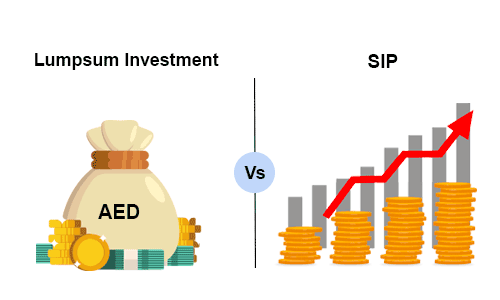Hybrid Funds vs Balanced Advantage Funds
Table of Content
Are you considering investing in hybrid funds or balanced advantage funds? It can take time to decide which fund is best for you. Before deciding, it's important to understand the differences between the two. This blog post compares hybrid and balanced advantage funds side-by-side, discussing the key similarities and differences between the two types of investments. It will look at their risk levels, costs, expected returns, and other important factors, to help you decide which type of fund is right for your needs.
What are Hybrid Funds?
Hybrid funds, also known as balanced funds or asset allocation funds, are investment funds that invest in a mix of different asset classes, such as stocks, bonds, and cash. These funds provide investors with a diversified portfolio, enabling them to gain exposure to a range of assets without purchasing each one individually. Hybrid funds typically aim to reduce risk while still providing growth potential.
Features of Hybrid Funds
Hybrid Funds are an increasingly popular investment choice, combining the advantages of equity and debt funds. Here are some of the key features that Hybrid Funds offer:
- Broad Exposure: Hybrid Funds provide investors with broad exposure to various asset classes, including stocks and bonds. It provides investors with greater diversification, reducing the risk associated with their investments.
- Flexibility: Hybrid Funds can adjust their portfolio composition based on market conditions and investor preferences. It allows investors to tailor their investments to best suit their goals.
- Lower Risk: By balancing equity and debt holdings, Hybrid Funds can reduce the overall risk associated with the investments. It makes them attractive to conservative investors who want to preserve their capital while still earning a return.
- Long-Term Investing: Hybrid Funds are well-suited for long-term investing as they can capture both the potential growth of equity investments and the stability of debt investments. It provides investors with greater peace of mind over the long haul.
- Tax Advantages: Some Hybrid Funds offer tax advantages to investors, allowing them to minimise their tax liabilities. It can be particularly beneficial to those looking to maximise their after-tax returns.
Who should invest in Hybrid Funds?
- Investors looking for moderate returns should consider investing in hybrid funds.
- Investors looking for a diversified portfolio should invest in hybrid funds as they provide exposure to debt and equity.
- Investors with a moderate risk appetite and a long-term investment horizon should invest in hybrid funds.
- Hybrid funds are ideal for investors looking for capital appreciation and regular income.
- Hybrid funds are suitable for investors looking to balance their portfolios with a mix of equity and debt investments.
What are Balanced Advantage Funds?
Balanced Advantage Funds are a type of mutual fund that combines the best of both stocks and bonds to provide investors with a diversified portfolio. They are considered a conservative investment vehicle, providing lower volatility than an all-stock portfolio. Unlike traditional stock and bond investments, these funds typically have exposure to asset classes, such as real estate, commodities, global equities, and fixed-income securities. Balanced Advantage Funds aim to provide investors with a degree of protection against market volatility by having exposure to multiple asset classes.
Features of Balanced Advantage Funds
While similar to hybrid funds, balanced advantage funds have some additional features that make them a great option for many investors.
1. Higher Returns
Balanced advantage funds have the potential to produce higher returns than traditional mutual funds by investing in a mix of stocks, bonds, and other assets. This diversification allows investors to benefit from high-growth opportunities and more conservative investments.
2. Flexible
Balanced advantage funds also allow investors to adjust their investments to maximise potential gains while minimising potential losses. For example, an investor can choose to invest more heavily in stocks when the market is rising and then move some of their investments into bonds when the market begins to decline.
3. Less Expensive
Balanced advantage funds are much less expensive than traditional mutual funds. It is because the fees associated with balanced advantage funds are typically lower than those associated with traditional mutual funds, resulting in cost savings for the investor.
4. Making Investment in Unique Strategies
Balanced advantage funds often offer investors the opportunity to invest in unique markets not available with traditional mutual funds. For example, an investor may be able to invest in a portfolio focused on small-cap stocks or even international equities, allowing them to gain exposure to markets they may not otherwise have access to.
Who Should Invest in Balanced Advantage Funds?
- Balanced advantage funds are mutual funds that strive to provide investors with a steady flow of returns while minimising the risks associated with investing in the stock market.
- Balanced advantage funds are ideal for investors looking for a medium to long-term investment with a relatively low level of risk.
- These funds are suitable for investors who want to diversify their portfolio and have a mix of stocks and bonds.
- Balanced advantage funds are also suitable for those looking for a steady income stream and do not want to take on too much risk.
- They are also suitable for those with a long-term investment horizon looking for something other than quick returns.
The Differences Between Hybrid and Balanced Advantage Funds
| Features | Hybrid Funds | Balanced Advantage Funds |
|---|---|---|
| Definition | Hybrid funds combine stocks and bonds, which is why they are sometimes referred to as balanced funds. These funds are typically used to provide diversification while reducing risk. | Balanced advantage funds are similar to hybrid funds but tend to be more aggressive. Rather than simply investing in stocks and bonds, these funds may also include investments in commodities, derivatives, currencies, or other asset classes. |
| Costs and Fees | Hybrid funds typically have lower management fees and other expenses. However, hybrid funds are sometimes cheaper. Be sure to compare the fees associated with each fund before making your decision. | Balanced Advantage Funds have comparatively higher management fees. |
| Investment Objective | Hybrid funds aim to provide capital appreciation and income generation. | Balanced advantage funds are designed to achieve capital appreciation and capital preservation. |
| Asset Allocation | Hybrid funds generally have a higher exposure to equity and debt instruments. | Balanced advantage funds typically have a more conservative asset allocation split between equity, debt, and money market instruments. |
| Risk Profile | Hybrid funds are usually considered higher-risk investments. | Balanced advantage funds have a low-risk level as they are less exposed to equity markets. |
| Investment Horizon | Hybrid funds are suitable for investors with a longer-term investment horizon. | Balanced advantage funds are more suitable for investors with a medium to the long-term investment horizon. |
Conclusion
Should we invest in a daily SIP? The answer to this question is a resounding yes! Investing in SIP Mutual funds is one of the best ways to grow your money safely and securely. Not only do SIP Mutual funds allow you to save money regularly, but they also diversify your portfolio and provide capital appreciation over the long term. Investing in SIP Mutual funds is a great way to stay disciplined and take advantage of the stock market's volatility. With the right guidance and knowledge, you can easily make SIP Mutual funds a part of your long-term financial plan. But, the final decision should be based on your investment goals and financial situation. Investing should always be a well-thought-out move.
More From Investment
- Recents Articles
- Popular Articles





.jpg)












.jpg)
.jpg)

















